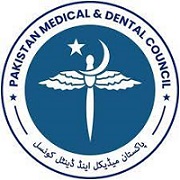PATTERNS OF TRAUMATIC BRAIN INJURIES IN PATIENTS PRESENTING AT A TERTIARY CARE UNIT
Abstract
Background: Traumatic brain injury is a change in function of the brain or alternatively any other evidence of brain abnormality that is caused by a sudden external force. The purpose of this study was to evaluate the distribution of traumatic brain injuries at Ayub Teaching Hospital. The results could be used to give recommendations for the betterment of approach towards and management of traumatic brain injuries care.
Methods: Questionnaire based data was collected from an inpatient population of patients who presented to the Neurosurgical Unit of Ayub Teaching Hospital with traumatic brain injuries. CAT scan was used as the imaging modality for preliminary diagnosis. The data was collected over a period of three years. Non-probability purposive sampling was used as the sampling technique. Patients of both sexes and all ages were included in the study.
Results: Out of a total of 1938 patients, 1470 (75.9%) were males and 468 (24.1%) were females. Patients from 20 to 40 years age group (38.1%) represented the greatest number. Patients from Abbottabad (41.8%) were found to be the most numbered contributors. Fall (52.6%) was found to be the most common external cause of TBIs followed by Road Traffic Accidents (34.1%). Most of the patients (42.4%) had a GCS score falling between 8 and 12. No lesion was found at the initial CAT scan in most of the patients (27.2%). Depressed Skull Fracture (21.4%) was the most common abnormal finding in initial imaging. Conservative (78.3%) treatment was provided to most of the patients keeping in view the appropriate management requirements. 97.8% of the patients were treated successfully.
Conclusion and Recommendations: The quality of care at Neurosurgery Ayub Teaching Hospital was found to be up to the mark for traumatic brain injuries patients. However, the standard of care at Kashmir and Balakot needs to be re-evaluated. At the same time meta-analysis outcomes should be established for the spectrum of the different aspects of traumatic brain injuries patients. More studies should be conducted to evaluate the factors responsible for making males more vulnerable to TBIs relative to females.






